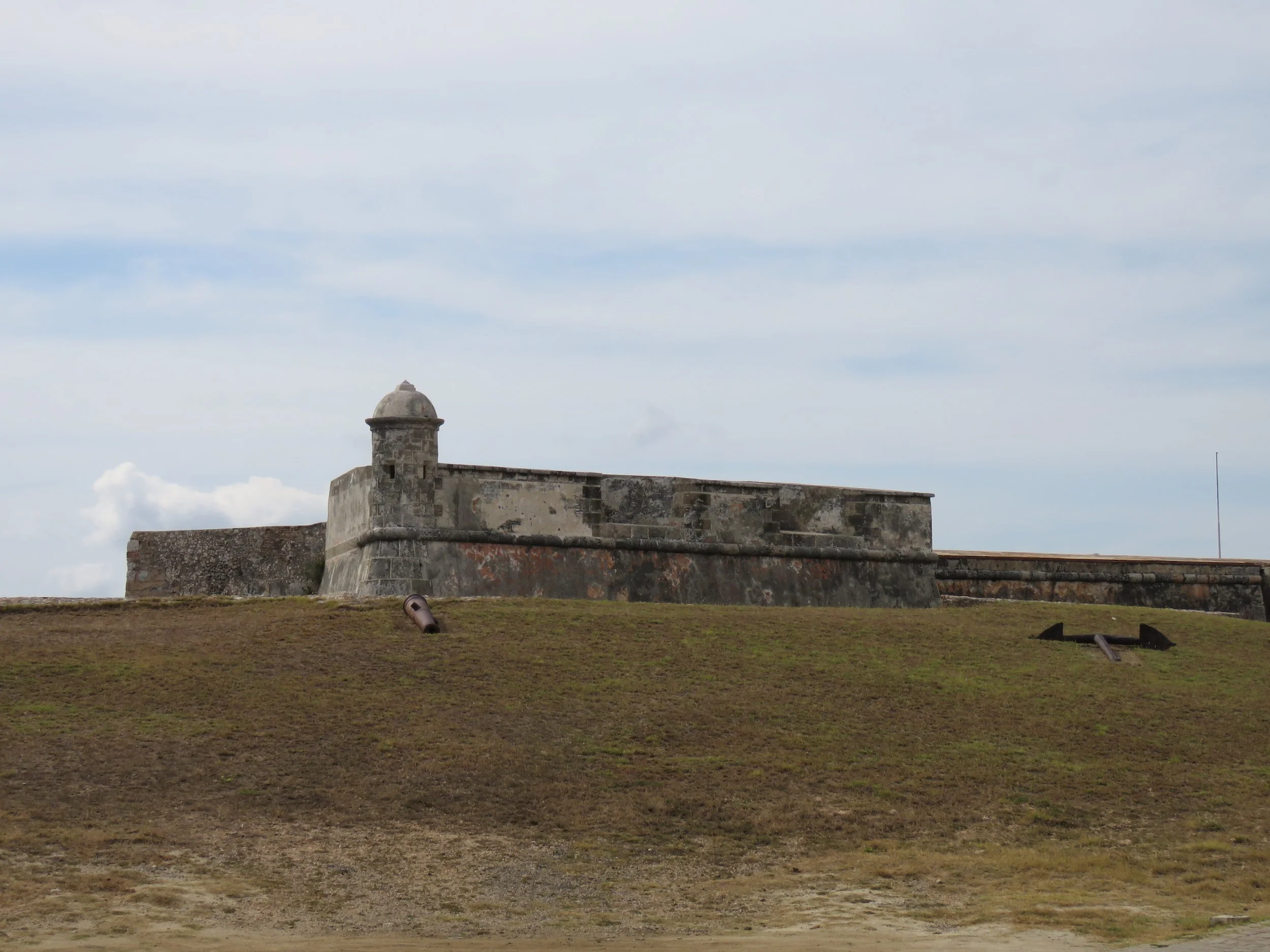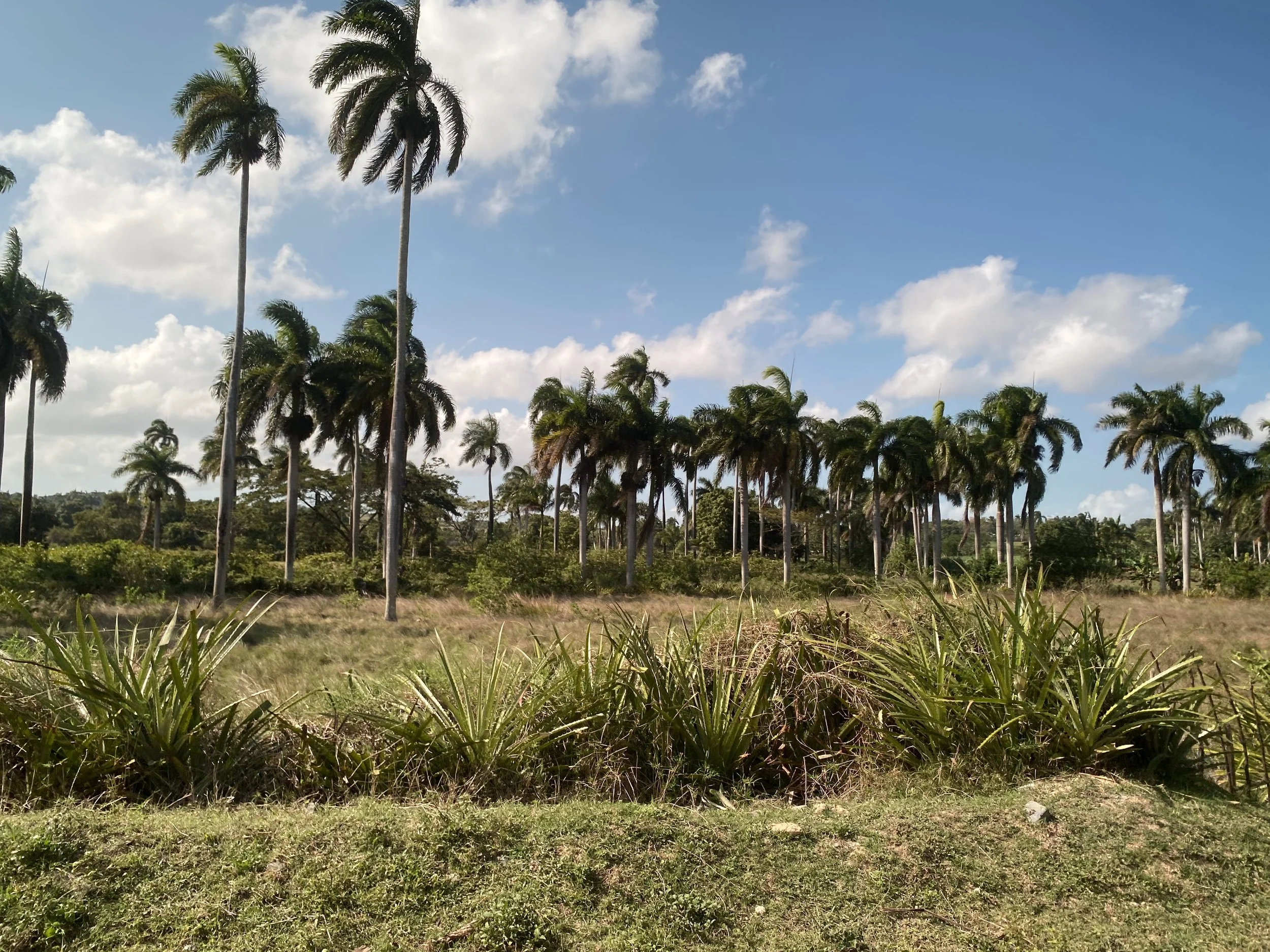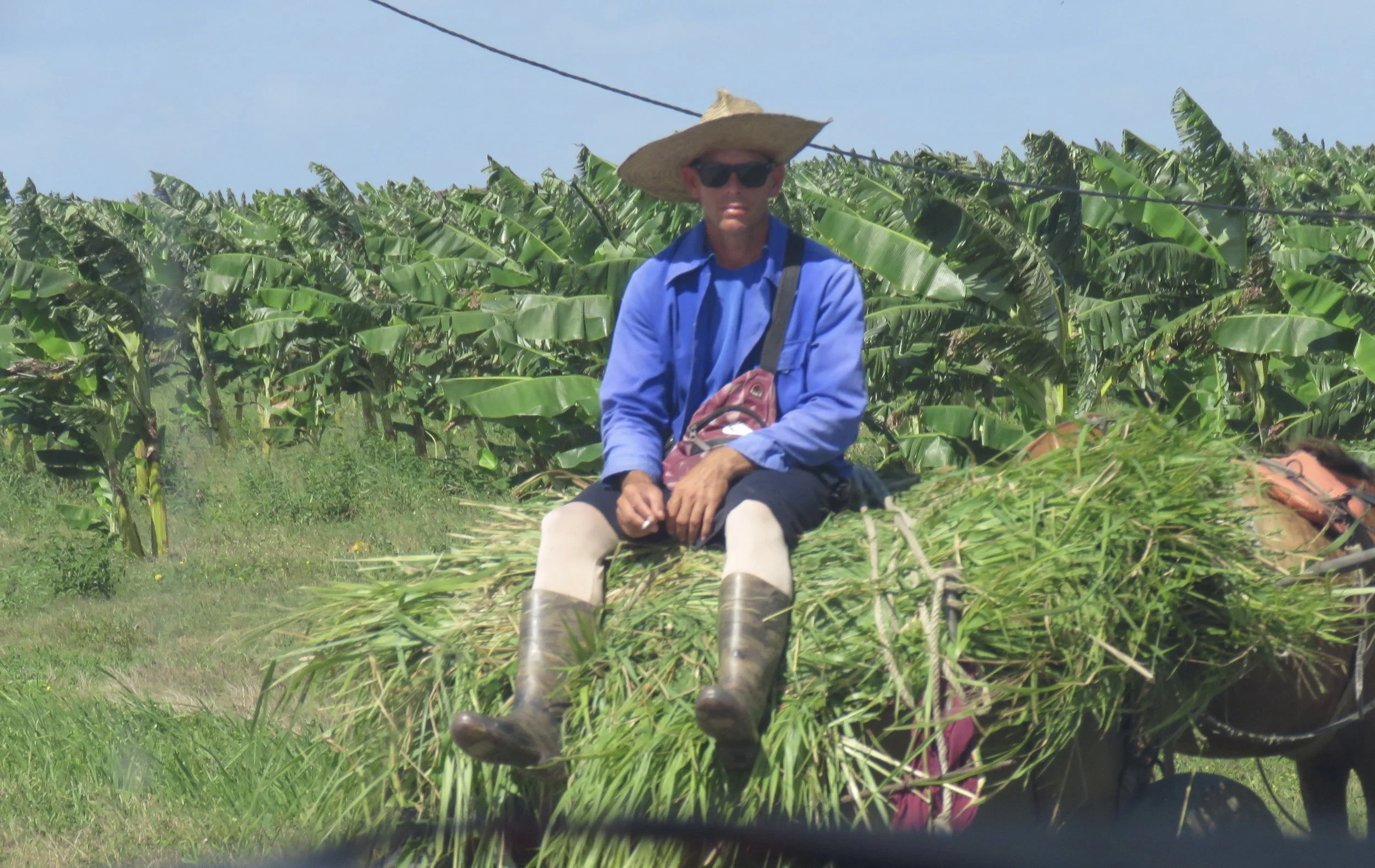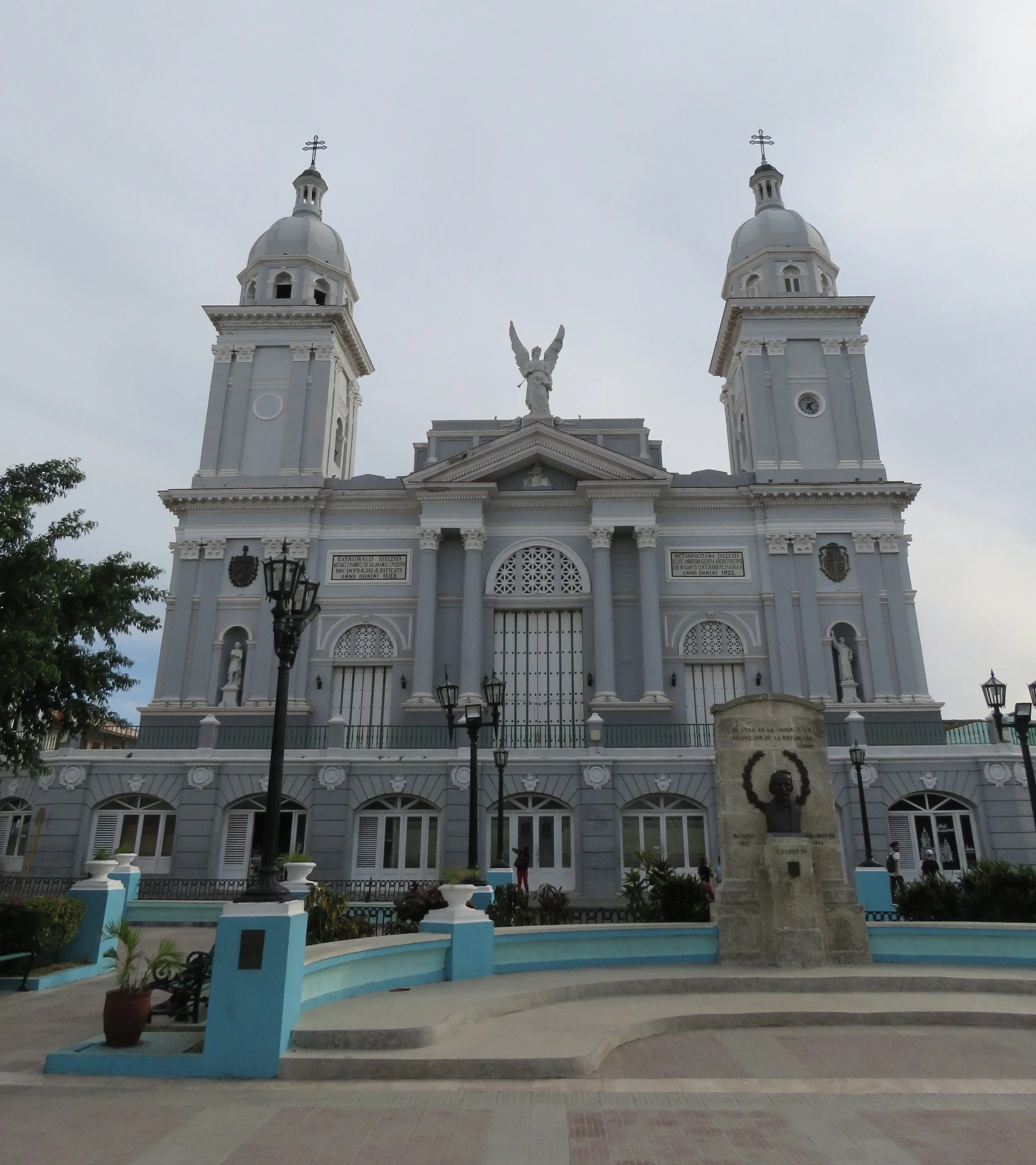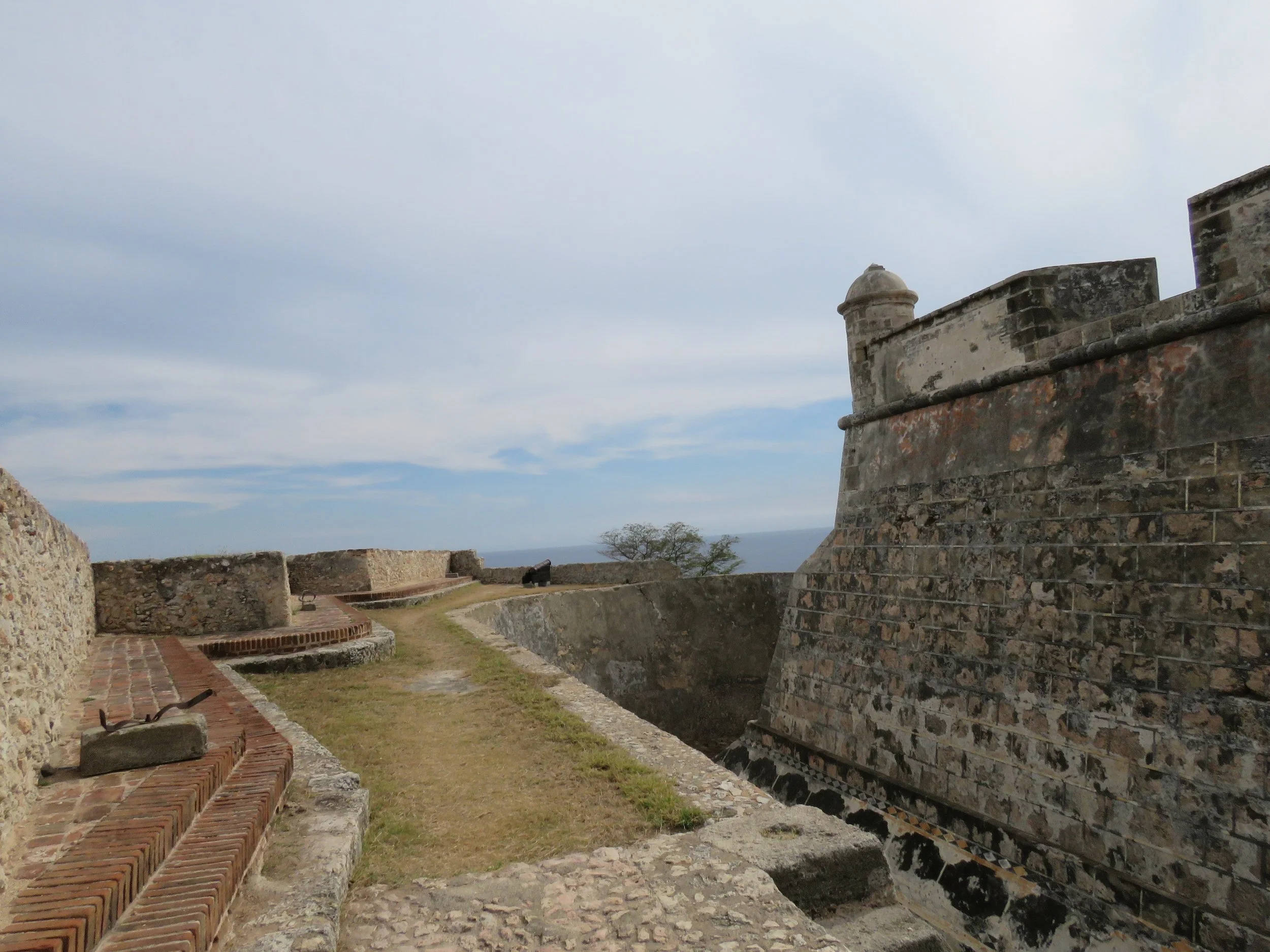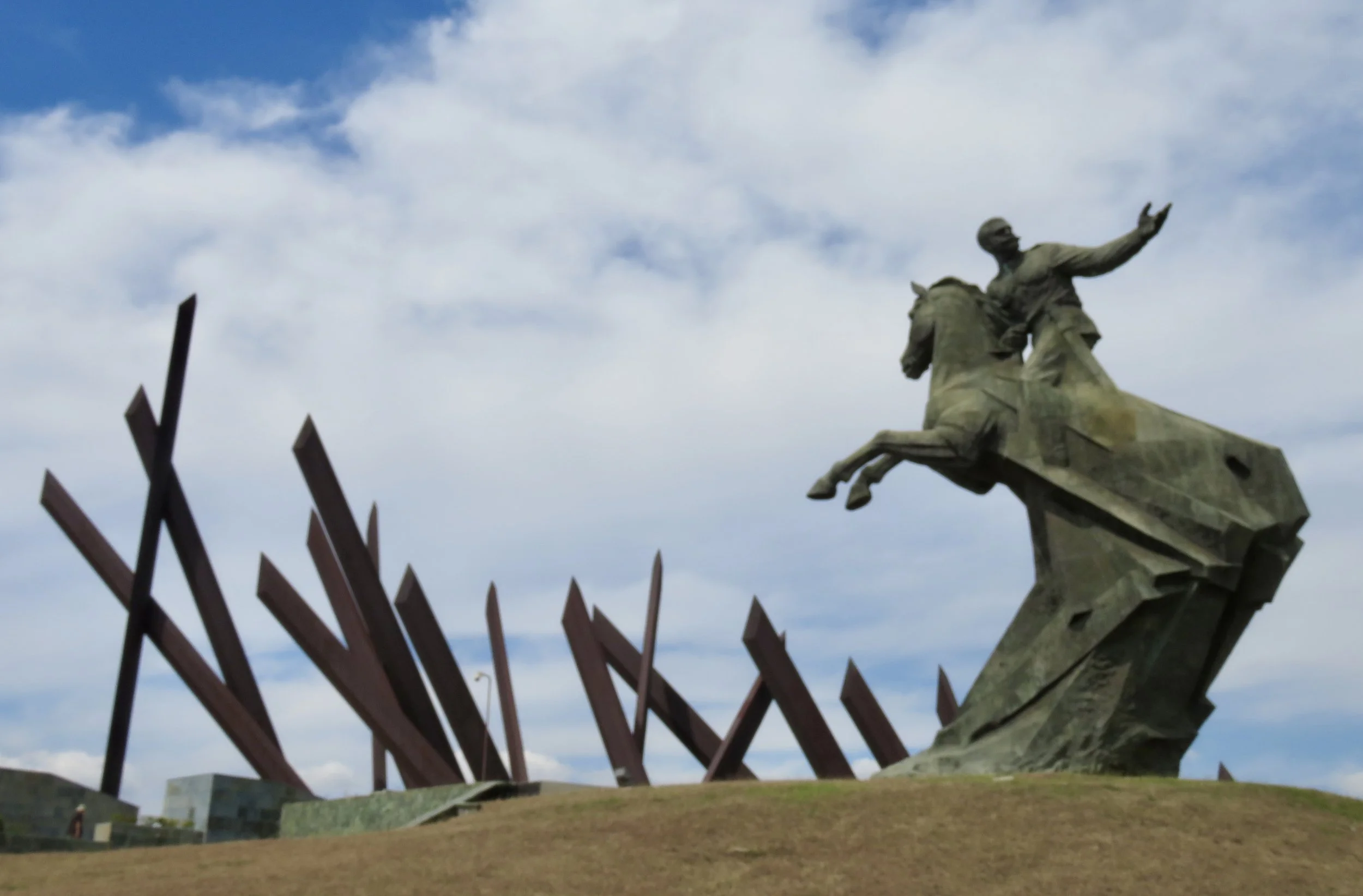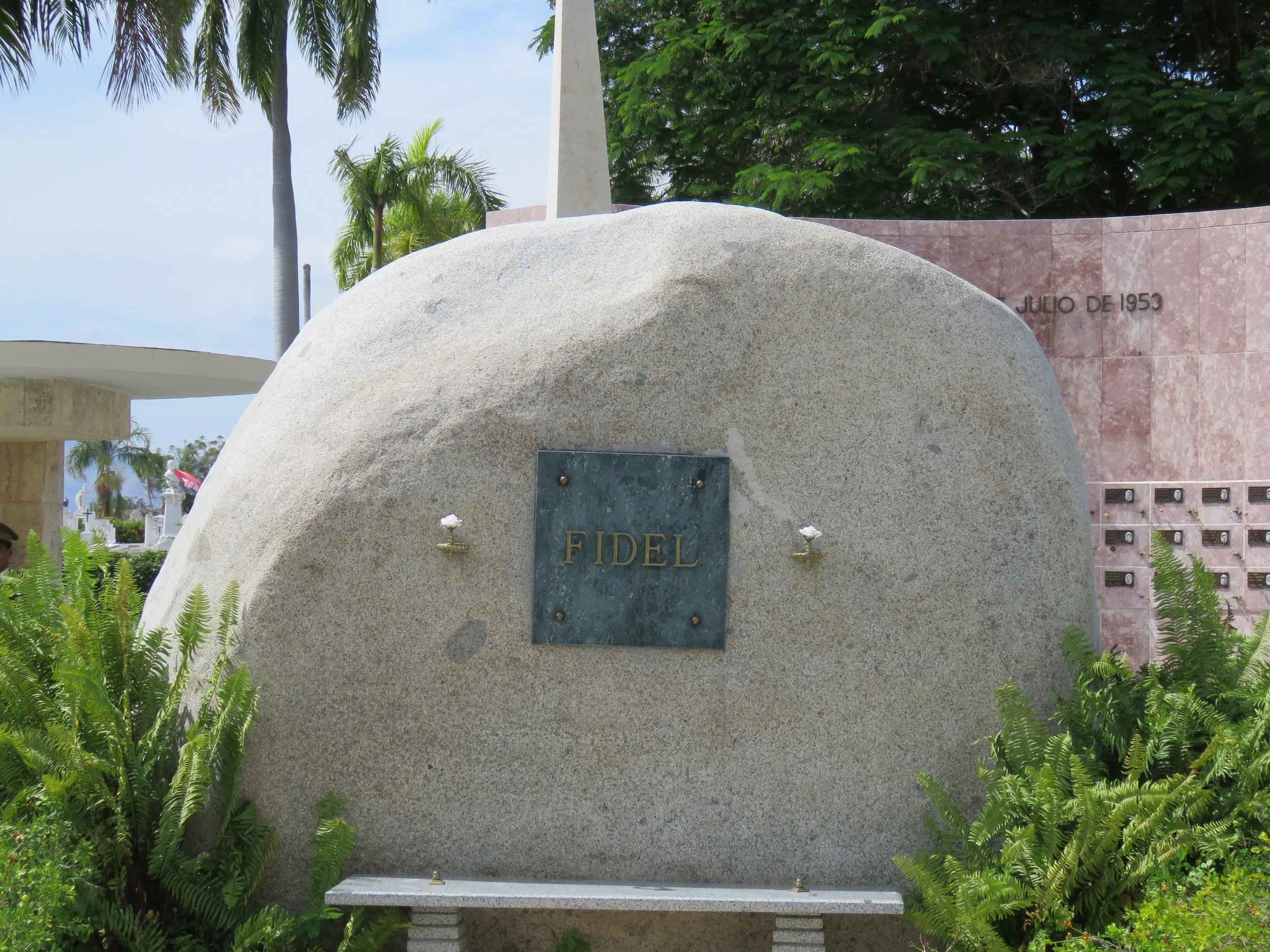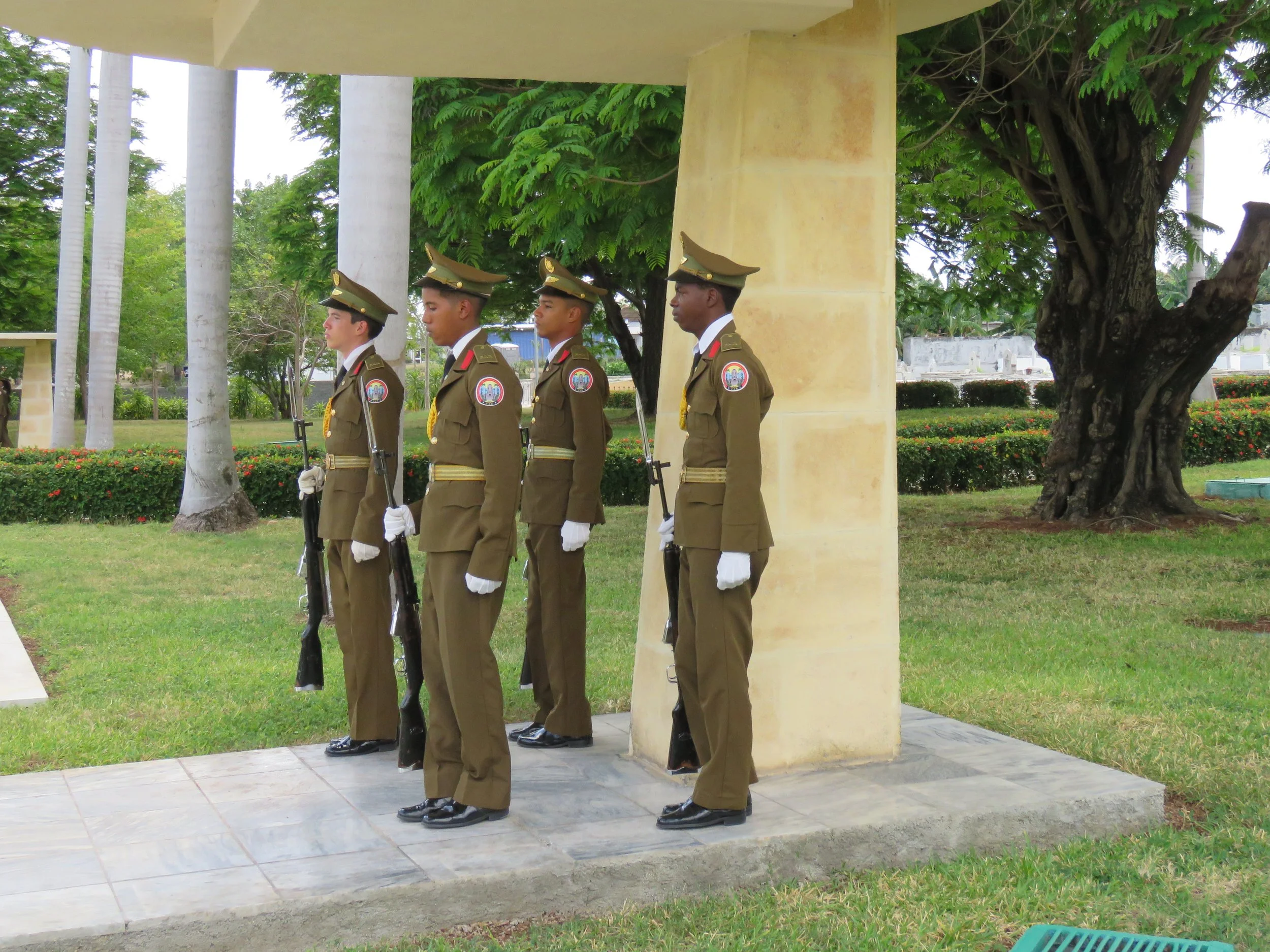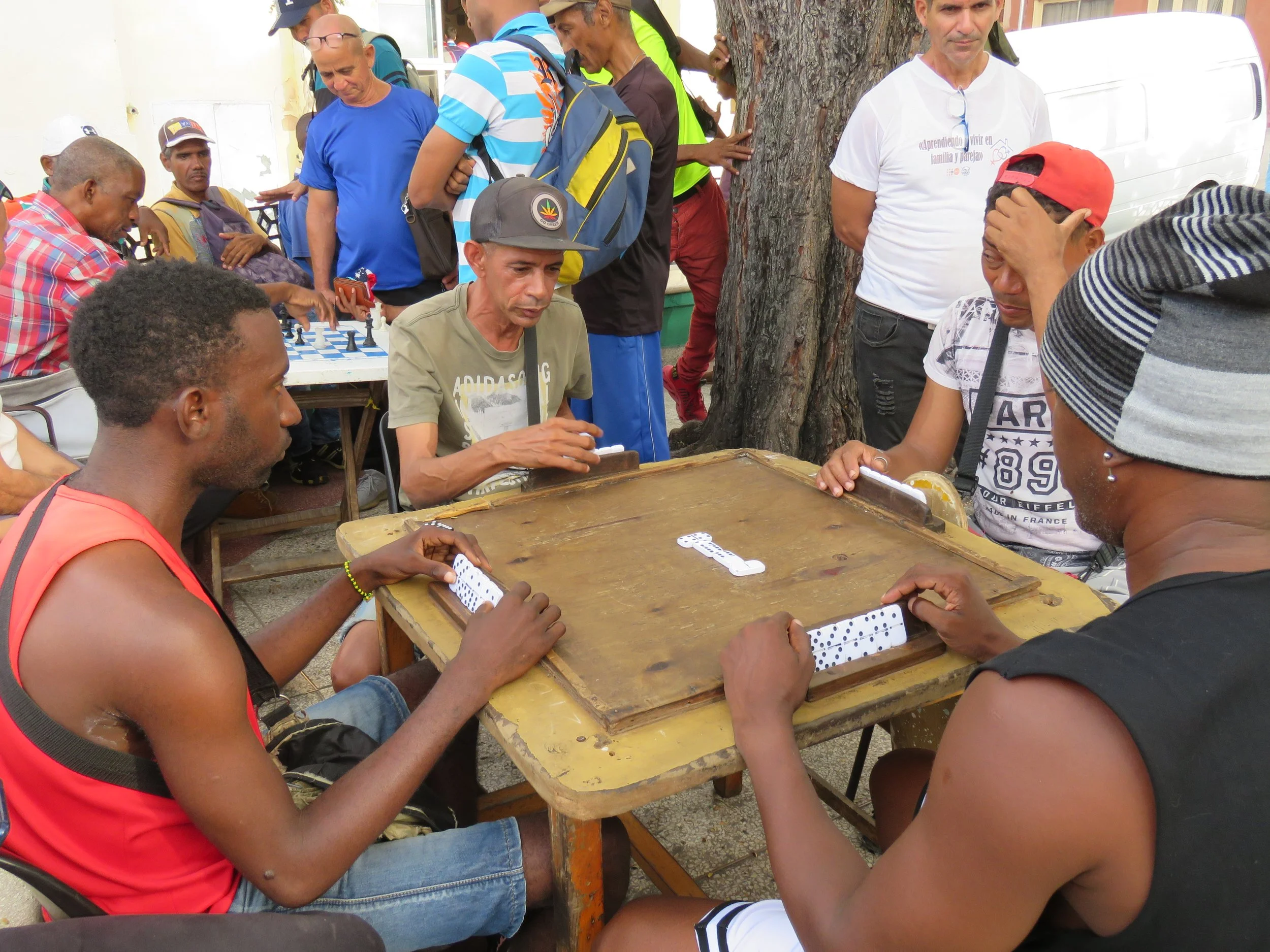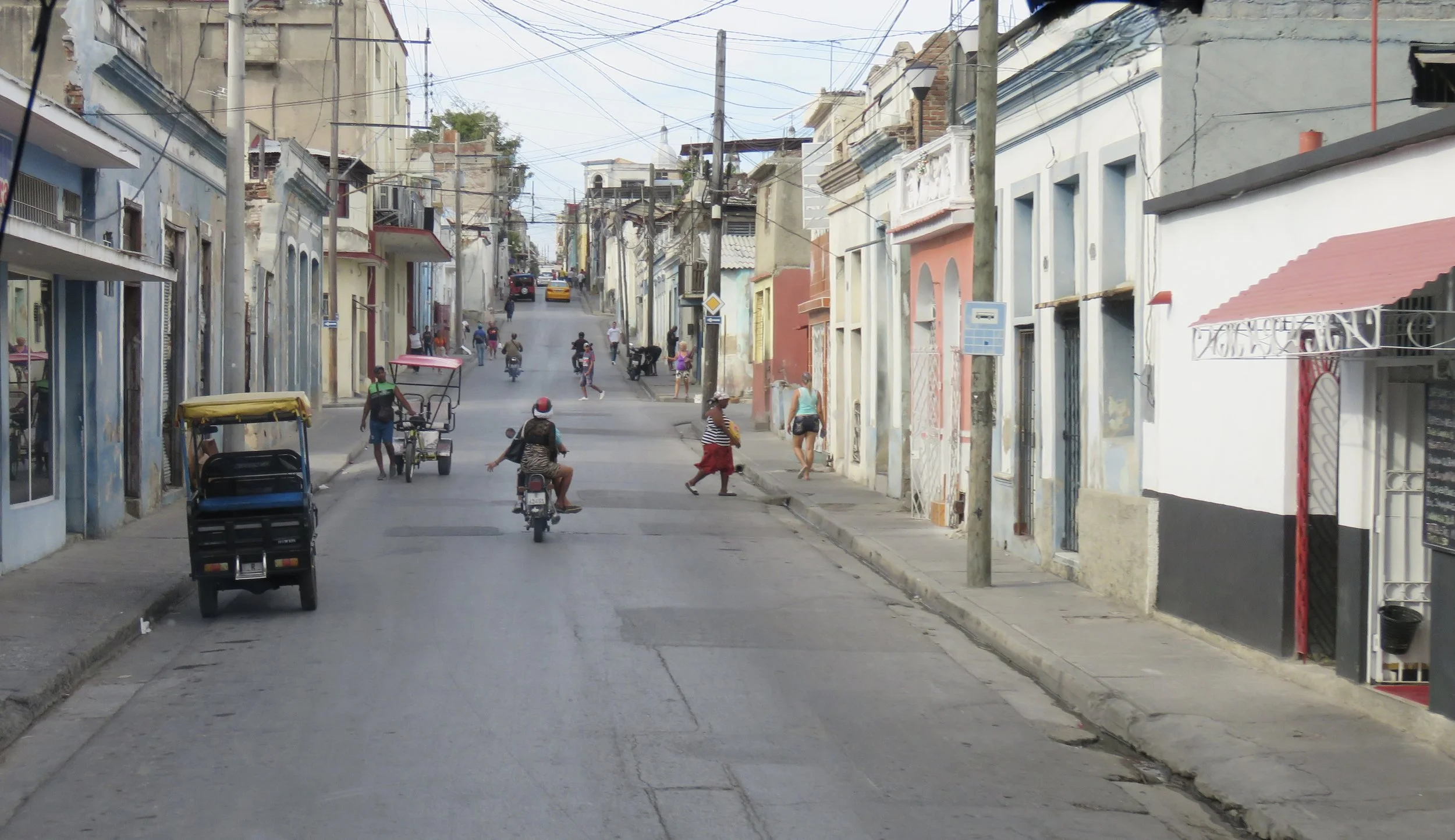Cuba’s Royal Palms are very tall and straight.
Santiago de Cuba is a historic city, the second largest in Cuba, nestled between the hills and the sea. Founded in 1515 it was, like Santiago de Compostela in Spain, named for St. James the Apostle.
Along the way, across the width of Cuba, we saw mostly horse and buggies as couples rode to town along the dusty roads. On major intersections, there were always huge crowds hoping to catch transportation into the city, or back home. They frantically waved pesos, even dollars. But also desirable items were offered to anyone who would give them a ride. With no gasoline production, fuel is hard to come by and unreliable. A taxi ride costs an arm and a leg.
Nuestra Señora de la Asunción Cathedral
Santiago’s downtown plaza and cathedral echoed a Spanish past. We visited the Nuestra Señora de la Asunción Cathedral and enjoyed strolling across the Plaza Mayor and through little side streets full of interesting little shops and colonial buildings.
Cuba under Spanish influence had been very much a catholic country. But under communism, religion was prohibited, even Christmas was band. Today, that is changing and churches are gaining more members in all faiths. We were told that many Cubans still practise a curious mixture of African faith glossed over as Catholic religion. Santeria is a fusion of Catholic practices and African folk beliefs. It emerged in Cuba during the 17th century, and has been embedded in Cuban society ever since.“People would hide wooden carvings of African origin, behind Catholic statues and pray to them instead of to the marble saints…,” our guide chuckled.
We visited San Pedro de la Roca Castle, a 17th century fortress built to protect the city and which is now a UNESCO World heritage site. A keen young, female guide told us of the history and toured us around, friendly and bubbly. Until she got us into a quiet corner and asked for money. When we weren’t ready to fork over more US dollars her friendliness quickly changed. From up above, we had a nice view of… Granma Island, now a fishing community. It was named for the boat Castro used to start the revolution. Our Cuban guide, giving us a tour of Santiago de Cuba, chuckled when he told us this, adding, “Maybe he didn’t know what the name meant, he probably thought it was more masculine…’“ But the Granma helped Castro to ultimately succeed in becoming ruler of Cuba for the next 50 some years. Now, an entire province and even the national communist newspaper are named Granma..
Plaza de la Revolución
We were also shown the city’s Plaza de la Revolución with its huge statue of city hero (and native son), Antonio Maceo, atop his horse and surrounded by 23 raised machetes. Next on the itinerary was a tour of the Santa Ifigenia Cemetery, where national guards parade in front of the memorials of many national heroes, including national poet José Marti and of course Fidel Castro himself.
This day tour of Santiago included lunch. It was served in a small restaurant in the suburbs. We were served… rice with beans and chicken. Dessert (and I wished I had taken a photo!) consisted of a small plate each with a circle squirted with a cake decorating tube, about 2” in diameter, of bright pink icing. Just that. Not cake, no icecream, just icing. I’m not sure if any of the visitors actually ate it…
But the funnest thing was, at night, when people gathered in the squares. They congregate at cement tables on the square which specifically offer a place to play dominoes. Men, old and young, play the national game to their hearts content. Many were keen to show us how to play. Here and there, someone played a guitar adding to the lively evening ambience.
Like me, the reporter of the 1999 National Geographic article wondered how Cuba could maintain its communist ideology. Today, there does not seem to be much ideology left. Unemployed people spent their days on a city squares or hung around sidewalks. Young people who live away from tourist resorts can’t find work. “We’ve lost all hope,” one young man told us. And people were afraid to speak up. Anything said against the government can result in being jailed.
When we left, we left almost all of what we brought in Cuba. Shoes, clothing, medication, toiletries, and lots of US dollars as tips. The few tourists who still come, continue to make a difference. But with no more flights from Europe, and only a few from Canada, there’s not enough tourists to really help this country in need of income. Although… in 2024 tourism from China increased by 50%.
RESOURCES: Not really related to Cuba, but the movie The Motorcycle Diaries is the story of Che Guevara, Castro’s friend, and quite interesting.
